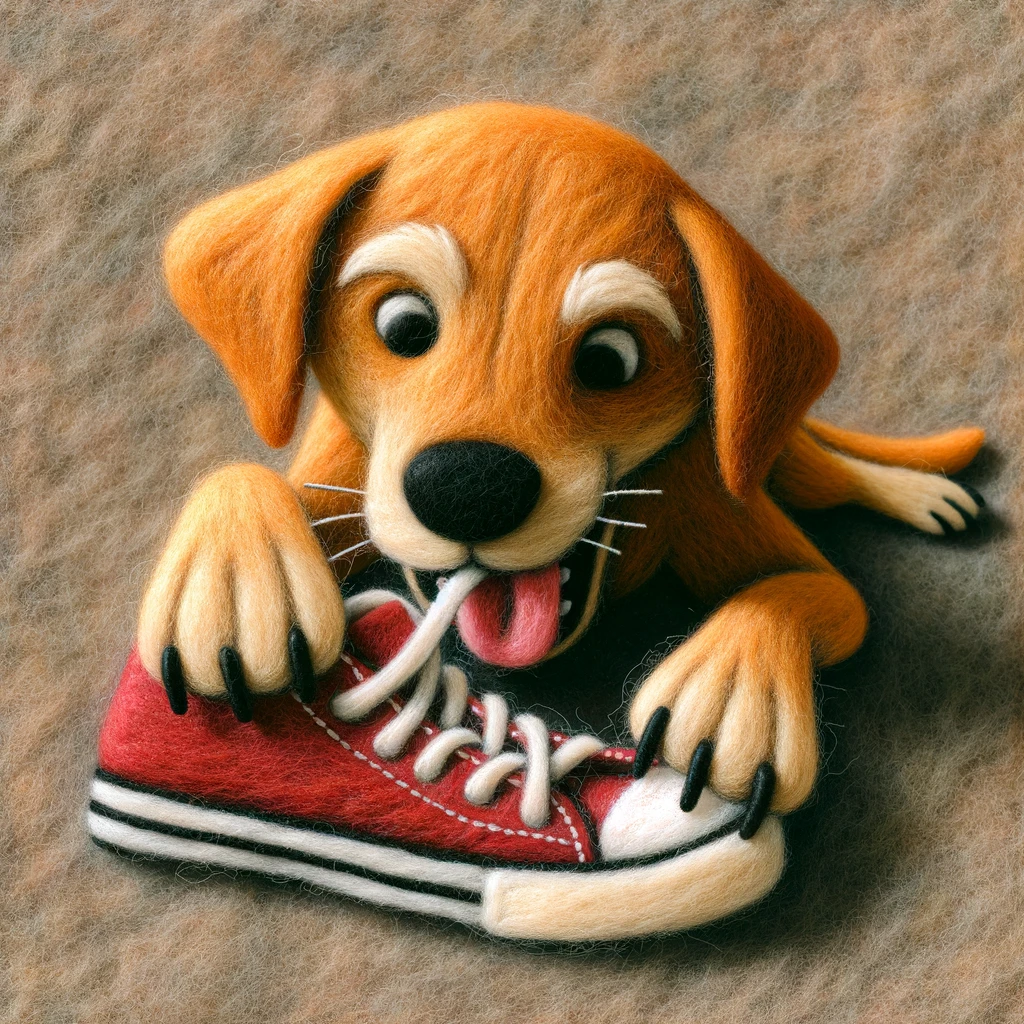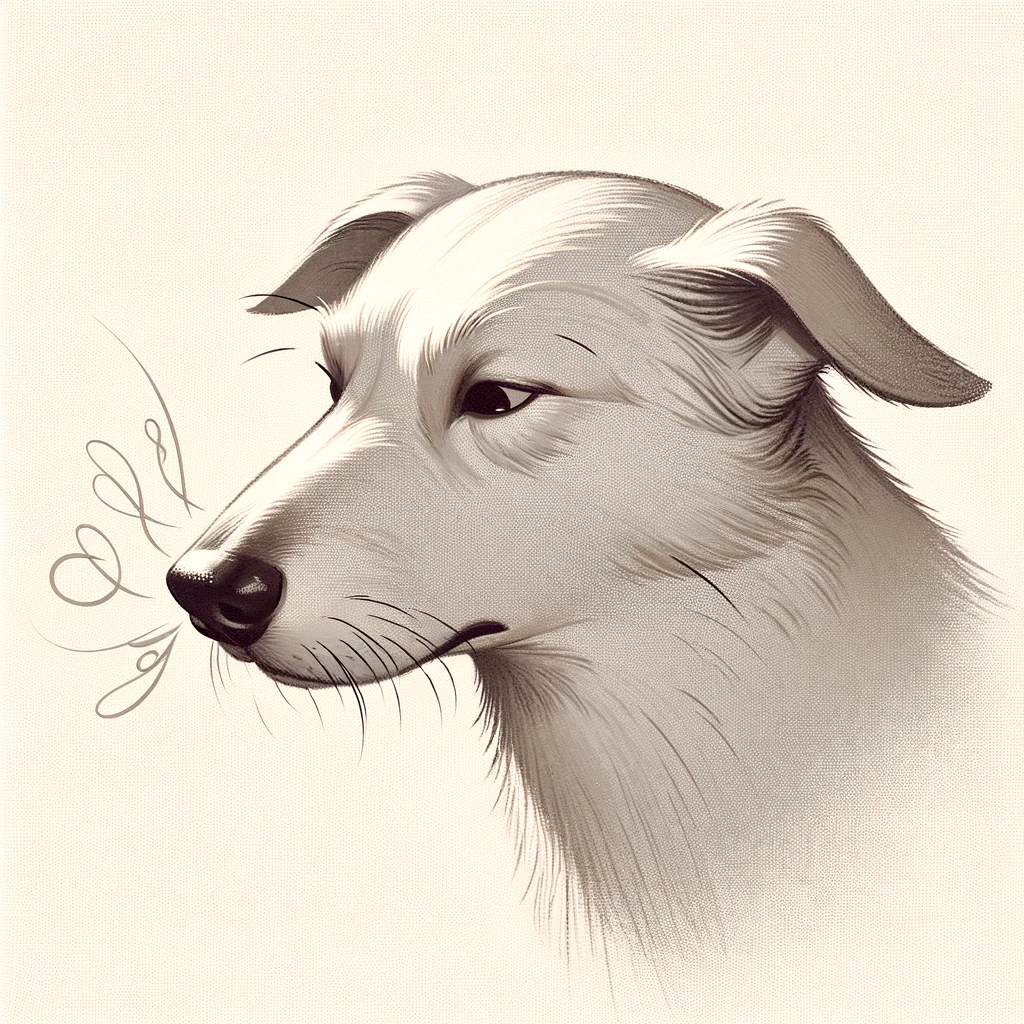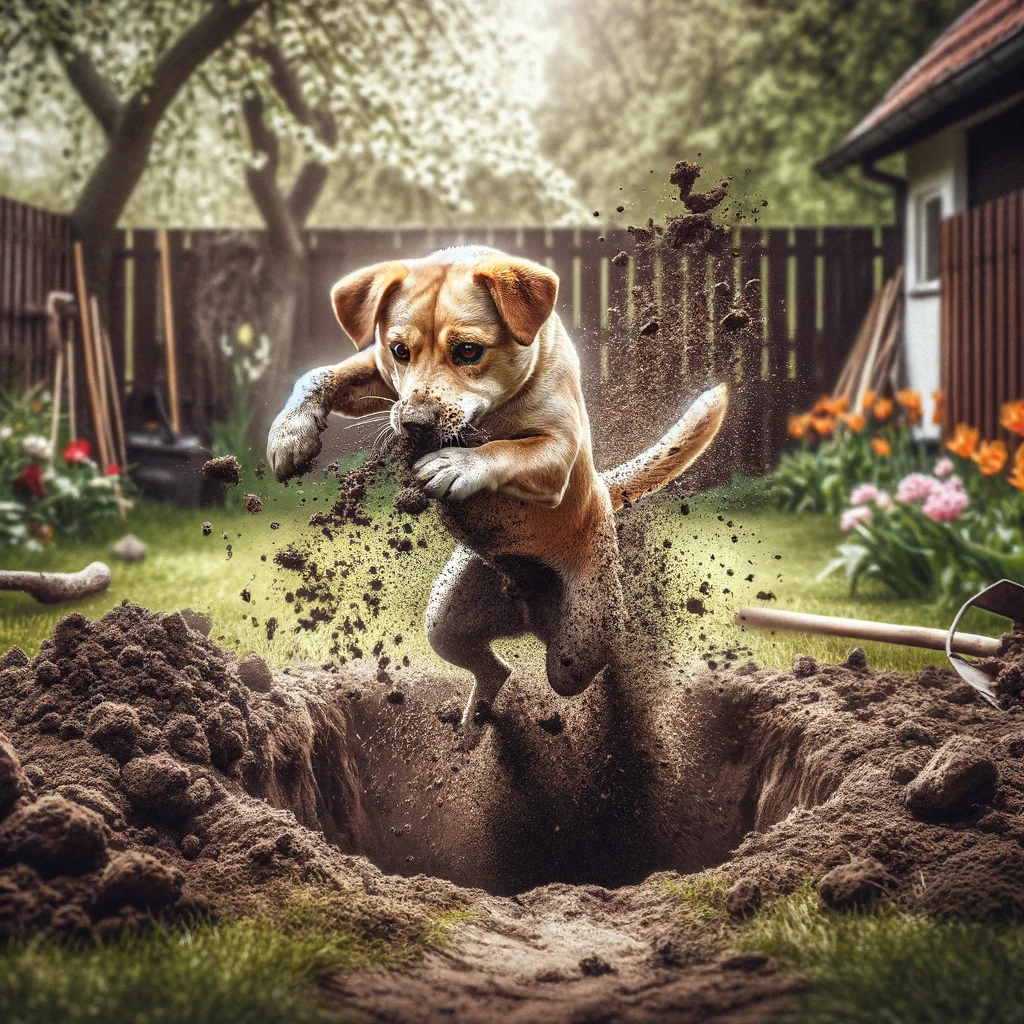Key Takeaways
- Understanding the Cause: Recognizing the reasons behind a dog’s chewing, such as teething discomfort, boredom, anxiety, insufficient exercise, or seeking attention, is crucial for addressing the behavior effectively.
- Proactive Prevention: Dog-proofing the home by securing valuables and potentially dangerous items, and using deterrents on items that cannot be moved, can significantly reduce instances of destructive chewing.
- Meeting Exercise and Mental Stimulation Needs: Ensuring dogs receive adequate physical exercise and mental stimulation through activities like walks, playtime, puzzle toys, and training can help prevent boredom and anxiety, reducing the likelihood of destructive chewing.
- Creating a Positive Environment: Providing a safe space for dogs when unsupervised, along with chew-proof accessories and furniture, helps minimize chewing damage while ensuring the dog feels secure and engaged.
- Behavioral Training and Redirection: Consistently redirecting chewing behavior to appropriate toys and rewarding positive behavior, along with addressing any underlying emotional issues, can effectively transform destructive chewing habits into healthy behaviors.
Why Does My Dog Chew Everything?

Dogs have an innate desire to chew, which serves various purposes depending on their age and needs.
As they grow, chewing remains an instinctual behavior that keeps their jaws strong and teeth clean. However, when chewing becomes destructive, it can lead to frustration for pet owners and potentially dangerous situations for the dog.
To address destructive chewing, it’s essential to understand the reasons behind your dog’s behavior. Some common causes include:
- Teething pain in puppies: Puppies go through a teething phase where their adult teeth emerge, causing discomfort and pain in their gums. Chewing helps to soothe the gums and relieve pain caused by the growth of new adult teeth.
- Boredom or lack of mental stimulation: Dogs that lack sufficient mental stimulation may turn to destructive chewing as a way to alleviate boredom. Providing plenty of mental and physical exercise can help avoid boredom, which can lead to pica (eating non-food items).
- Anxiety or stress: Dogs may chew destructively as a coping mechanism for anxiety or stress. Separation anxiety, fear of loud noises, or changes in the home environment can all contribute to increased stress levels. Chewing can help dogs release endorphins and provide a sense of comfort during stressful situations.
- Insufficient physical exercise: Dogs with pent-up energy due to insufficient physical exercise may resort to chewing as a way to release that energy. Exercise reduces stress and eliminates one of the primary causes of high jinks behavior – high energy levels. Regular walks, runs, and play sessions can help prevent destructive chewing by providing an appropriate outlet for your dog’s energy.
- Seeking attention from owners: In some cases, dogs may engage in destructive chewing as a way to seek attention from their owners, even if that attention is negative. If you see an increase in behaviors like barking, chewing, & biting, it may be a sign your dog feels neglected or bored. Providing positive attention and interaction through training, playtime, and affection can help reduce attention-seeking behaviors.
By identifying the underlying cause of your dog’s chewing habits, you can develop a targeted approach to curb the behavior.
Your Dog Is Bored

To keep your dog from getting bored and resorting to destructive chewing, it’s essential to provide them with plenty of mental stimulation. Here are a few ideas for activities that can help keep your dog’s mind engaged and prevent boredom-induced chewing:
- Puzzle toys and interactive feeders: Puzzle toys use food treats to stimulate and hone your dog’s innate problem-solving skills. These toys challenge your dog mentally and keep them occupied for extended periods. Interactive feeders are another great option, as they encourage your dog to work for their food, providing mental stimulation during mealtimes.
- Scent games and nose work: Dogs have an incredible sense of smell, and playing scent games can provide excellent mental stimulation. Hide treats around the house or yard and encourage your dog to find them using their nose. You can also enroll your dog in nose work classes, where they learn to search for specific scents in various environments.
- Obedience training and trick training Teaching new tricks or commands is a fantastic way to keep your dog’s mind engaged and strengthen your bond. Regular obedience training sessions not only provide mental stimulation but also help reinforce good behavior and improve your dog’s overall manners.
- Rotate toys: From a mental perspective, dogs are very similar to children. They love their toys, but they can get bored with them over time. To keep things interesting, rotate your dog’s toys every few days, introducing new ones and putting away old ones.
- Interactive play and exercise: Emotional stimulation through one-on-one play time with your dog helps build your bond with them, as well as wears them out and prevents unwanted behaviors. Engage in interactive play sessions with your dog, such as fetch, tug-of-war, or hide-and-seek. Regular exercise, such as walks, runs, or trips to the dog park, can also help tire out your dog both physically and mentally.
By incorporating a variety of mentally stimulating activities into your dog’s daily routine, you can help prevent boredom and reduce the likelihood of destructive chewing. Remember to be patient and consistent in your efforts, and always supervise your dog during playtime to ensure their safety.
Is Your Dog Anxious or Stressed?

Anxiety and stress can be significant factors in a dog’s destructive chewing behavior. To help your dog cope with these emotions and prevent inappropriate chewing, consider the following strategies:
- Identify and address triggers Observe your dog’s behavior and try to identify specific situations or stimuli that trigger their anxiety or stress. Common triggers include loud noises, separation from owners, or changes in the home environment. Once you’ve identified the triggers, work on desensitizing your dog to them gradually and creating a more positive association.
- Create a safe space Provide your dog with a dedicated safe space, such as a crate or a quiet room, where they can retreat when feeling anxious or overwhelmed. Make sure that this area is comfortable and includes your dog’s favorite toys, treats, and bedding. This safe haven can help your dog feel more secure and reduce stress-induced chewing.
- Use calming aids There are various calming aids available that can help soothe your dog’s anxiety. These include pheromone diffusers, calming collars, and compression wraps. Calming supplements, such as those containing L-theanine or chamomile, may also be helpful in reducing anxiety levels.
- Provide plenty of exercises and mental stimulation Regular exercise and mental stimulation can help reduce stress and anxiety in dogs. Engage your dog in daily walks, runs, or playtime, and provide them with puzzle toys or interactive feeders to keep their mind occupied. A tired and mentally stimulated dog is less likely to engage in destructive chewing.
- Consider professional help If your dog’s anxiety or stress is severe or persists despite your efforts, it may be necessary to seek the guidance of a professional dog trainer or behaviorist. They can help you develop a personalized plan to address your dog’s specific needs and provide additional strategies for managing their anxiety.
Remember, managing a dog’s anxiety or stress is a process that requires patience, consistency, and a positive approach. By working with your dog to reduce their anxiety levels, you can help them feel more secure and confident, ultimately reducing the likelihood of destructive chewing behavior.
Or Maybe Your Dog is Seeking Attention?

If your dog is engaging in destructive chewing as a way to seek attention, it’s essential to address this behavior by providing them with positive attention and interaction. Here are some ways to show your dog love and attention, which can help reduce attention-seeking destructive chewing:
- Quality time and undivided attention Set aside dedicated time each day to give your dog your undivided attention. This can include playtime, grooming sessions, or simply sitting together and providing gentle petting or massage.
- Positive reinforcement training Engage in regular training sessions with your dog, using positive reinforcement techniques such as praise, treats, and toys. This not only provides mental stimulation but also strengthens your bond and helps your dog associate good behavior with positive attention from you.
- Incorporate play and exercise Playtime is a great way to give your pup one-on-one attention and build your bond. Engage in interactive play sessions with your dog, such as fetch, tug-of-war, or hide-and-seek. Regular exercise, like walks or runs together, also provides an opportunity for bonding and positive attention.
- Practice calm, affectionate interactions Show your dog affection through calm, gentle interactions, such as soft praise, ear scratches, or belly rubs. These positive interactions help reinforce the idea that calm, quiet behavior earns them the attention they crave.
- Reward good behavior When your dog is engaging in appropriate behavior, such as chewing on their own toys or resting calmly, be sure to acknowledge and reward this with praise, treats, or affection. This helps your dog understand that they don’t need to resort to destructive chewing to gain your attention.
Remember, it’s crucial to provide attention and affection on your own terms, rather than solely in response to your dog’s demands or destructive behavior.
Recognize the difference between affection and attention towards your dog. By proactively offering positive attention and interaction throughout the day, you can help reduce your dog’s need to seek attention through inappropriate means like destructive chewing.
Dog-Proofing Your Home

One of the first steps in preventing destructive chewing is to dog-proof your living space. This involves keeping valuable or dangerous items out of your dog’s reach. Consider the following tips:
- Store shoes, clothing, and accessories in closed cabinets or closets
- Keep electronic devices, such as remote controls and charging cables, out of reach
- Secure trash cans with tight-fitting lids or place them in a closed pantry
- Remove any poisonous plants or hazardous materials from your dog’s environment
- Close off rooms or areas that contain items you don’t want your dog to access
By minimizing the availability of inappropriate chewing options, you can reduce the likelihood of your dog engaging in destructive behavior.
Using Deterrents to Discourage Chewing

In some cases, you may need to use deterrents to discourage your dog from chewing specific objects. Deterrent sprays with unpleasant tastes or smells can be applied directly to the items you want to protect. Some common deterrents include:
- Bitter apple spray
- Cayenne pepper or hot sauce
- Citrus-scented sprays
- Vinegar or ammonia-based solutions
When using deterrents, be sure to test them on a small, inconspicuous area first to ensure they won’t damage the item. Reapply the deterrent regularly, as the scent or taste may fade over time.
Redirecting Your Dog’s Attention

When you catch your dog chewing something inappropriate, it’s crucial to redirect their attention to an appropriate chew toy. Here’s how to do it effectively:
- Calmly interrupt your dog’s chewing by making a noise or calling their name
- Offer them an appropriate chew toy and encourage them to take it
- Praise your dog enthusiastically when they begin chewing the toy
- Repeat this process consistently to reinforce the desired behavior
By redirecting your dog’s attention and rewarding them for chewing appropriate items, you can gradually shape their behavior and reduce the occurrence of destructive chewing.
Creating a Safe Space

When you’re unable to supervise your dog directly, providing them with a crate or safe room can help prevent destructive chewing. Ensure the space is comfortable and equipped with safe toys to keep your dog occupied. Consider the following tips:
- Choose a crate that is appropriately sized for your dog, allowing them to stand up, turn around, and lie down comfortably
- Place a soft bed or blanket inside the crate for added comfort
- Include a variety of safe chew toys to keep your dog entertained
- Introduce your dog to the crate gradually, using positive reinforcement to create a positive association
Remember, a crate should never be used as a punishment, but rather as a safe, comfortable space for your dog to relax and unwind.
Chew-Proof Accessories and Furniture
In addition to training and prevention, you can also invest in chew-proof accessories and furniture to minimize damage to your belongings. Some options to consider include:
- Chew-resistant dog beds made from durable materials like ballistic nylon or Kevlar
- Heavy-duty toys designed for aggressive chewers, such as rubber or nylon bones
- Baby gates or pet barriers to restrict access to certain areas of your home
- Furniture covers or slipcovers to protect upholstery from chewing damage
While these products can help reduce the impact of destructive chewing, they should be used in conjunction with training and behavior modification for the best results.
Conclusion

Destructive chewing is a common issue faced by many dog owners, but with patience, consistency, and positive reinforcement, it can be successfully managed. By understanding your dog’s chewing habits, dog-proofing your home, providing appropriate chew toys, and addressing underlying issues, you can help your furry friend develop healthier, more appropriate chewing behaviors.
Remember, every dog is unique, and what works for one may not work for another. Be patient and persistent in your efforts, and don’t hesitate to seek professional guidance if needed. With time and dedication, you can help your dog overcome destructive chewing habits and enjoy a happier, more harmonious household.



